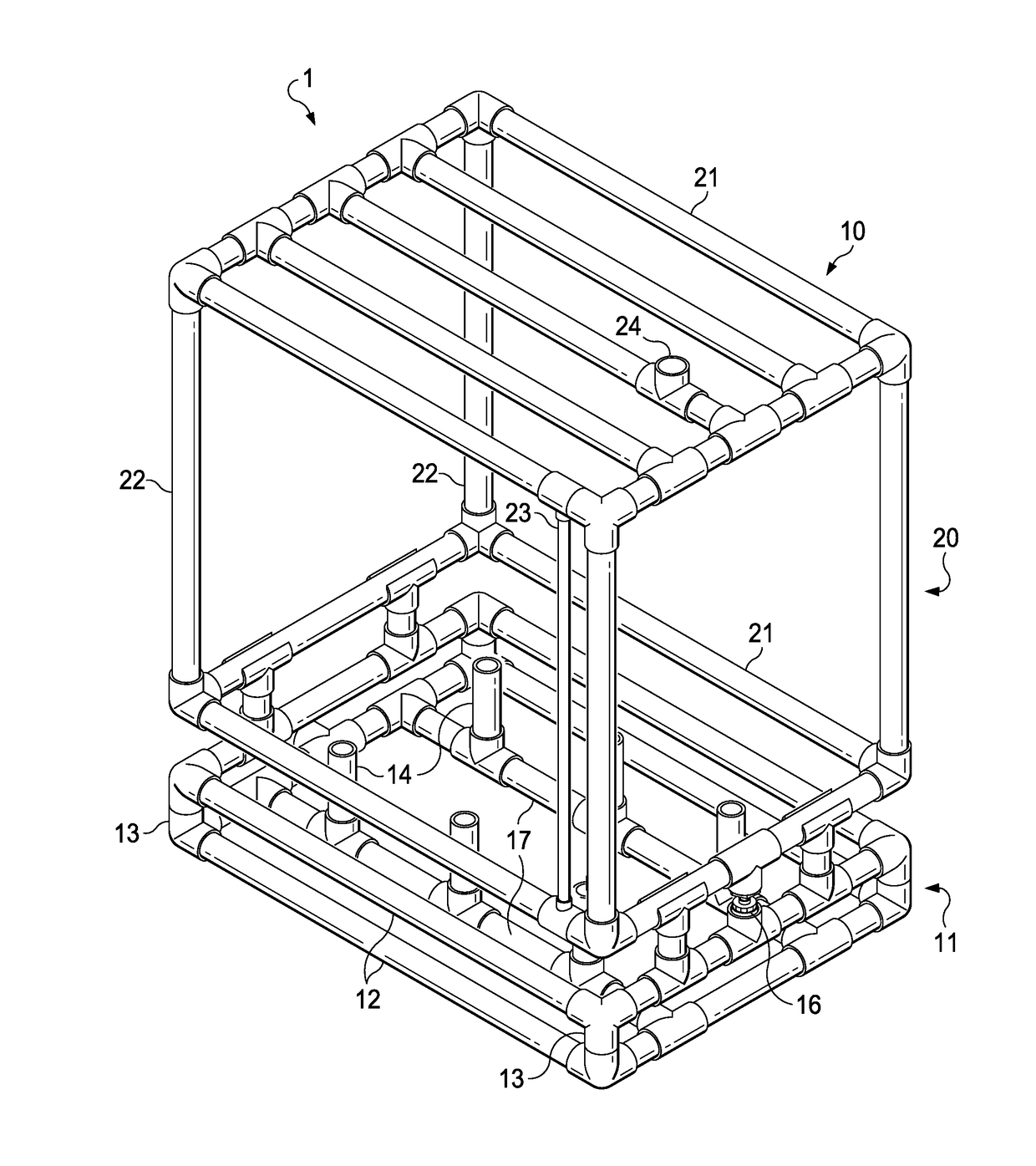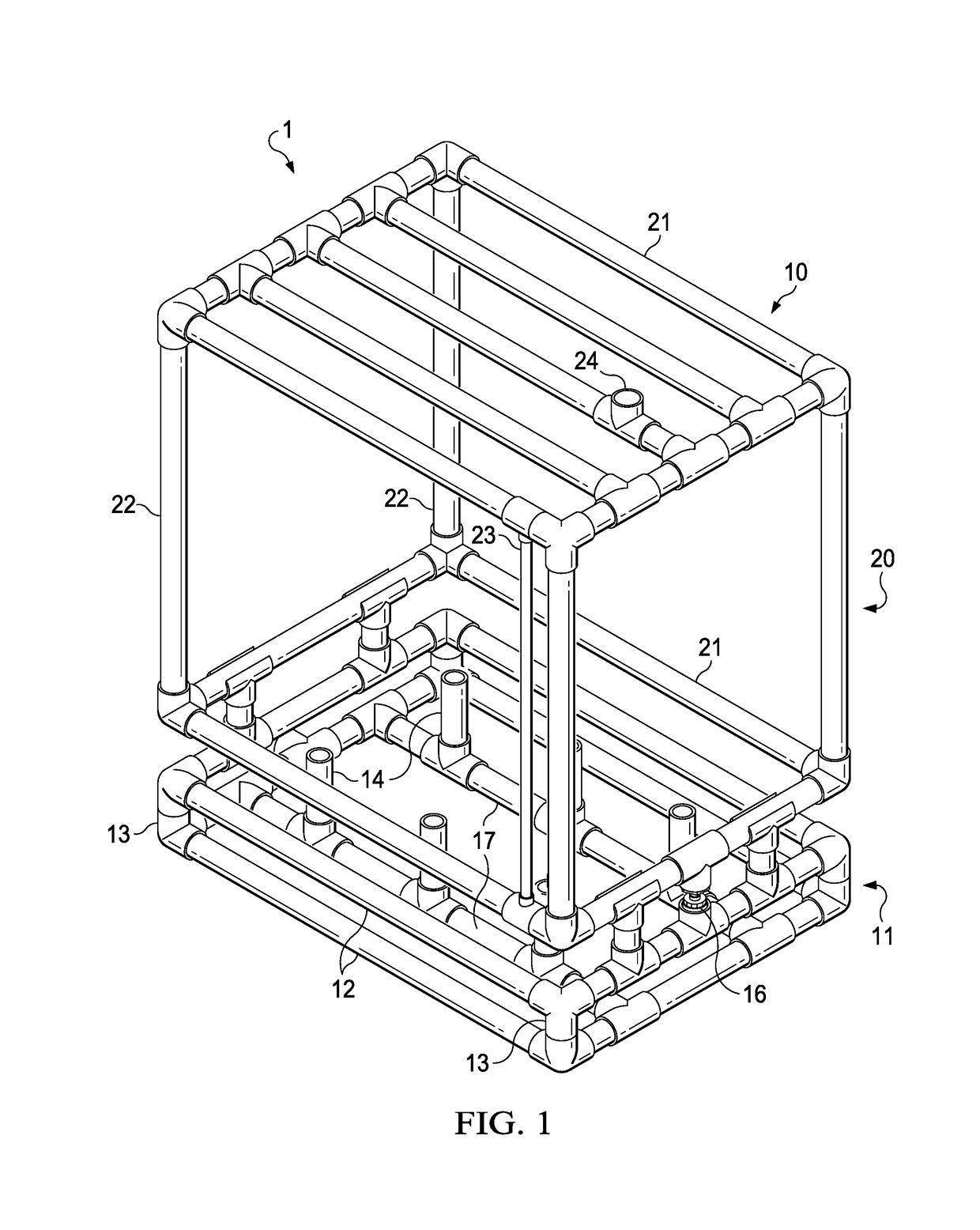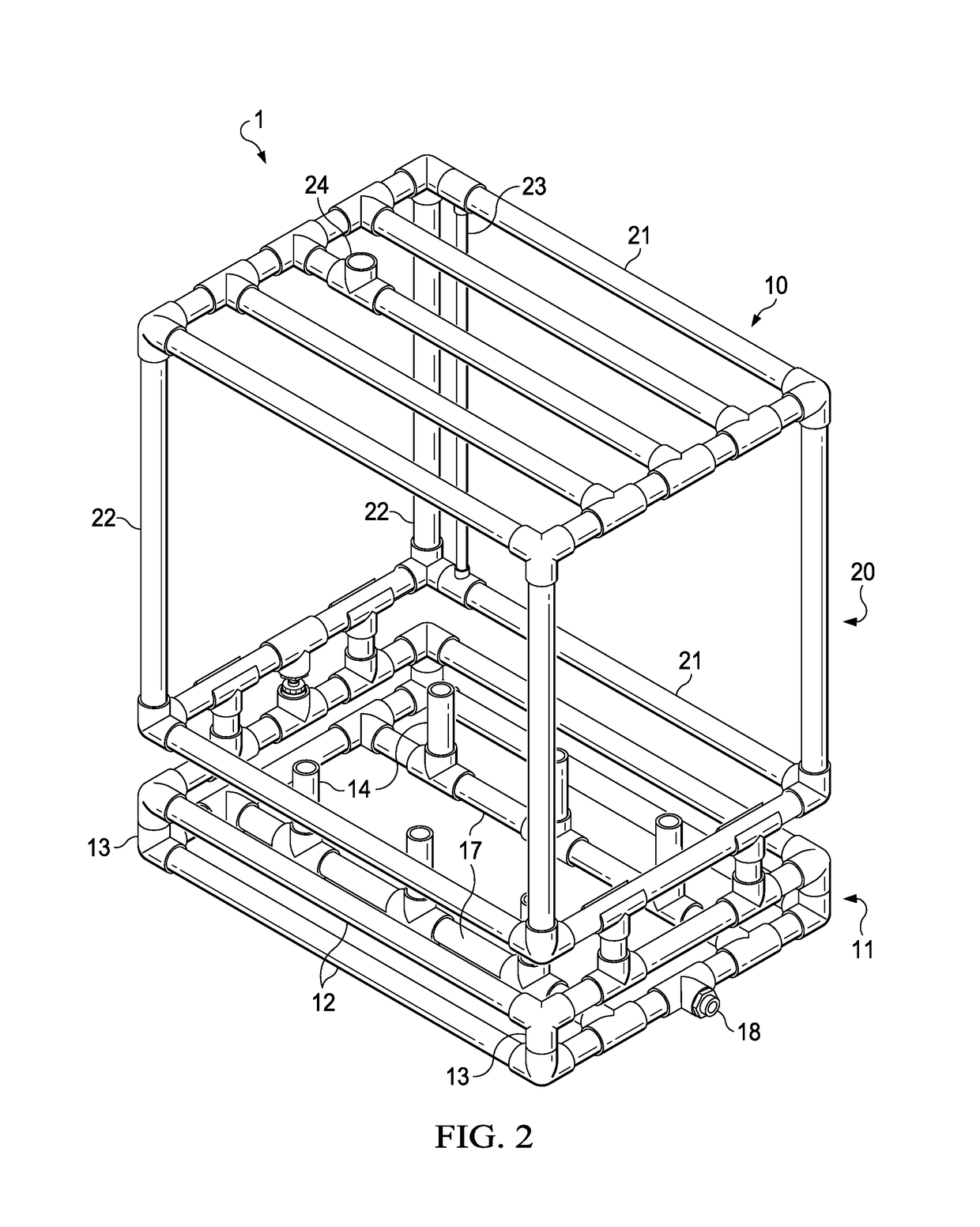Self-watering portable greenhouse
a greenhouse and self-watering technology, applied in the field of portable greenhouses, can solve the problems of strict timing requirements, portable greenhouses do not contain water sources, special challenges, etc., and achieve the effects of reducing watering requirements, reducing evaporation, and more flexibility in timing
- Summary
- Abstract
- Description
- Claims
- Application Information
AI Technical Summary
Benefits of technology
Problems solved by technology
Method used
Image
Examples
Embodiment Construction
[0024]Illustrated in FIG. 1 is the self-watering portable greenhouse 1 of the present invention. Greenhouse 1 is comprised of frame 10, having lower compartment 11 and upper compartment 20. Frame 10 is constructed of light weight, water-tight tubular members suited to contain water or similar liquid. The tubular members of which frame 10 is constructed may be cylindrical, square, octagonal or other shape, but in the preferred embodiment the tubular members are cylindrical PVC piping. Lower compartment 11 and upper compartment 20 of frame 10 each forms a separate reservoir (an upper reservoir and a lower reservoir) for water or similar liquid that can be used as source of liquid nutrients for plants. Frame 10 is a unique combination that forms (1) two reservoirs of liquid nutrients, (2) a platform for plant containers, (3) tubular housings for wicks that are fitted into plant containers, and (4) a structural skeleton for exterior walls of the greenhouse. The structural skeleton may a...
PUM
 Login to View More
Login to View More Abstract
Description
Claims
Application Information
 Login to View More
Login to View More - R&D
- Intellectual Property
- Life Sciences
- Materials
- Tech Scout
- Unparalleled Data Quality
- Higher Quality Content
- 60% Fewer Hallucinations
Browse by: Latest US Patents, China's latest patents, Technical Efficacy Thesaurus, Application Domain, Technology Topic, Popular Technical Reports.
© 2025 PatSnap. All rights reserved.Legal|Privacy policy|Modern Slavery Act Transparency Statement|Sitemap|About US| Contact US: help@patsnap.com



